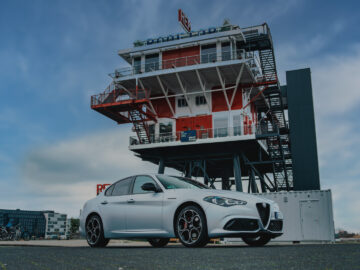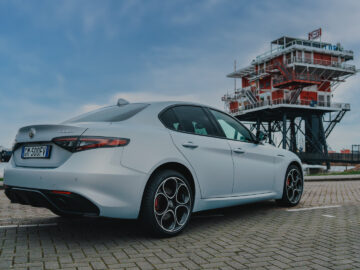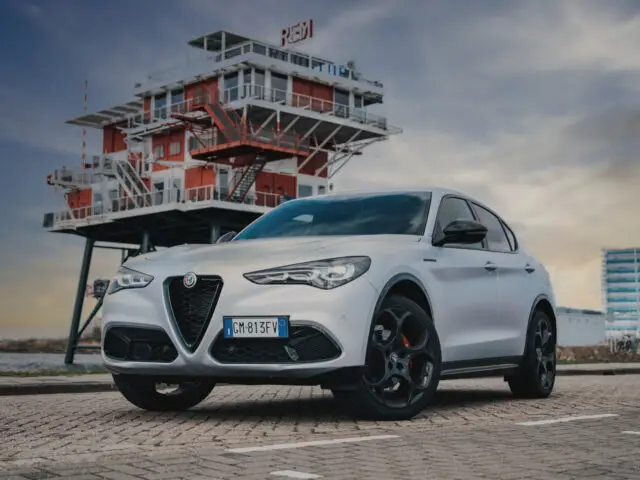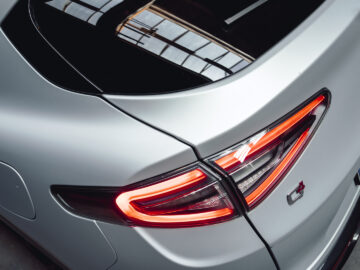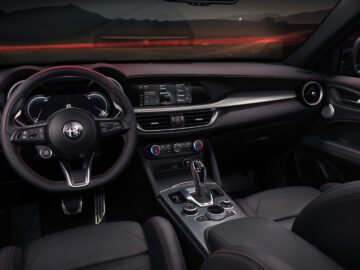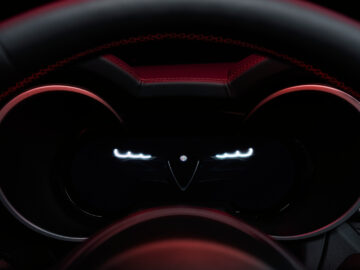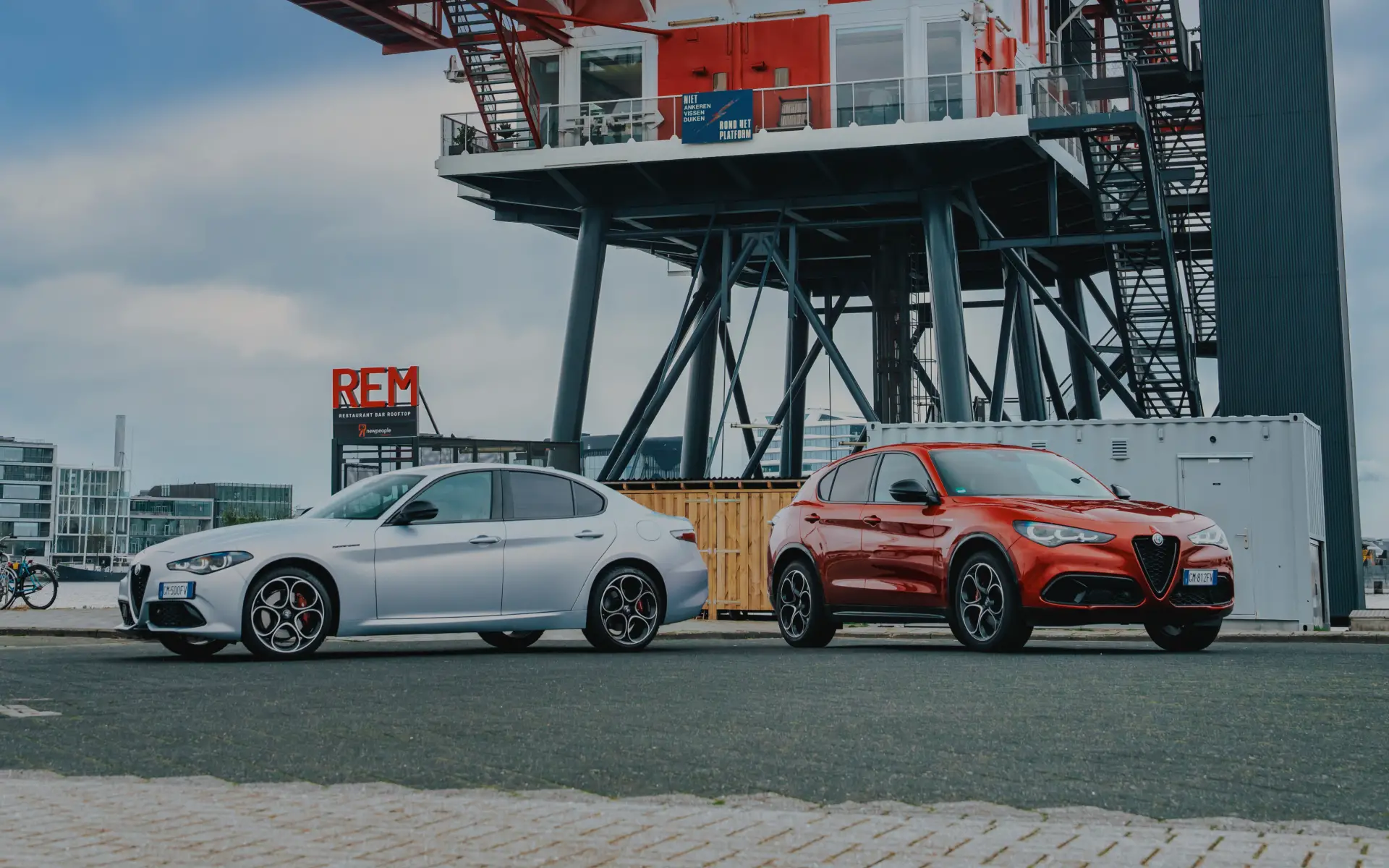Review – Alfa Romeo Giulia & Stelvio (2023): Fun, but also innovative?
With Alfa Romeo, the association with “La Dolce Vita” is easily made: Italian sunshine, beautiful driving roads through the hills of Tuscany and delicious food. The latter is obviously present, leave that to Alfa Romeo, but otherwise the association with Italy on this stormy Wednesday afternoon on the IJ in Amsterdam is hard to find. Then again, the Alfa Romeo Giulia and Stelvio we will be driving all have Italian license plates. Especially at the front, the smaller white plate looks a lot better than one of those big yellow Dutch license plates.
Alfa Romeo Giulia & Stelvio (2023) – Fun, but also innovative? – AutoRAI TV
Watch first, then read? Watch our video of the updated Alfa Romeo Giulia and Stelvio on YouTube!
LED headlights inspired by the past
The front end is immediately the main landmark of the redesigned Giulia and Stelvio. Indeed, the new layout of the headlights cannot be missed. The shape of the housing remained the same, but in each headlight there are now three C-shaped light elements. That “3+3 layout,” according to Alfa Romeo, harkens back to the iconic SZ and the Proteo study model, among others. We also recognize a touch of Tonale and 159 in it. Adaptive LED headlights are always standard on both the Giulia and the Stelvio, whichever trim level you choose.
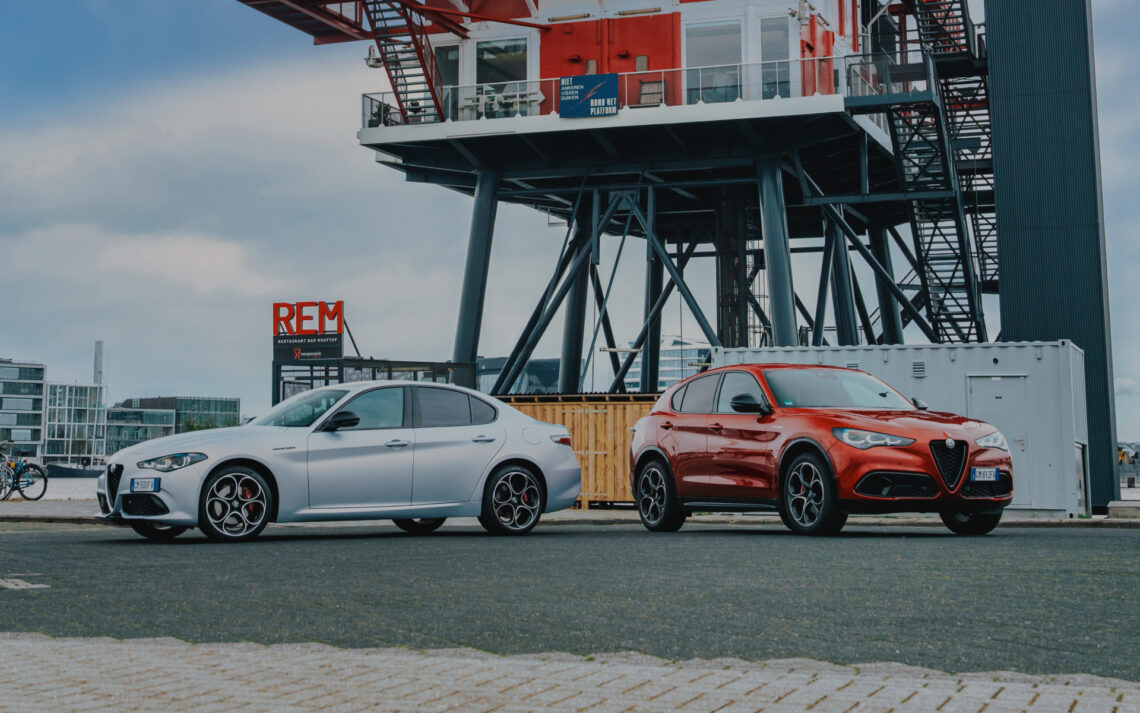
At the rear, the layout of the lights remained the same for both models, but Alfa Romeo changed only the color of the glass. The Giulia’s taillights will have darker smoked glass from 2023, while the Stelvio’s glass will be transparent from now on. In terms of bumper work, Alfa Romeo says there is a new grille on the Giulia and Stelvio, but in practice it is largely the same as before. The biggest change is that fog lights in the front bumper are now no longer available.
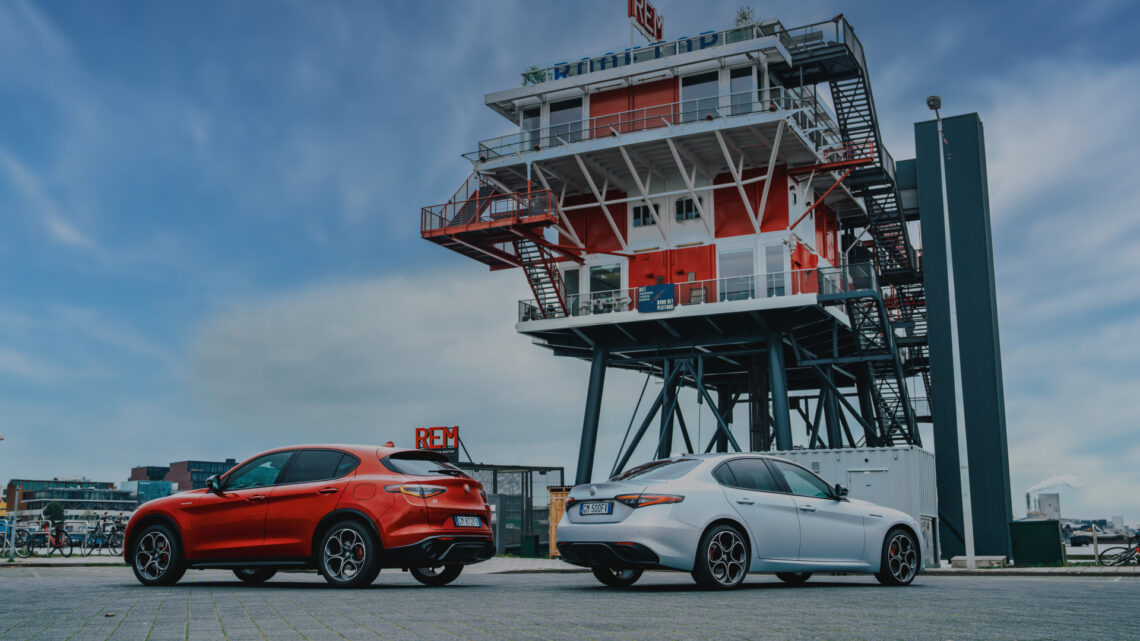
Digital, but then again not
In the interior of the Giulia and Stelvio, Alfa Romeo continues on the same tour as the exterior. Read: it is mostly a celebration of recognition. Getting in, an all-new digital instrument cluster greets us with a cutaway of the Giulia or Stelvio’s front end. That digital instrumentation is located in the original gauge cluster, preserving the two “tubes” for the tachometer and speedometer. The new instrument panel is 12.3-inches in size and offers several layout options. We particularly like the retro counters. A nice touch here is that the numbers 220, 240 and 260 on the speedometer are reversed from the rest of the numbers to make them more legible.

Looking at the rest of the interior of both the Giulia and the Stelvio, everything has mostly stayed with the familiar. Alfa Romeo did add over-the-air updates and an NFT (non-fungible token). Important vehicle information can be stored in that NFT. The infotainment system is not of the most modern kind, especially compared to BMW, Mercedes-Benz and Audi systems. Apple CarPlay and Android Auto do come standard in the Giulia and Stelvio, fortunately.
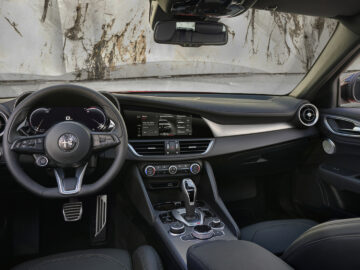
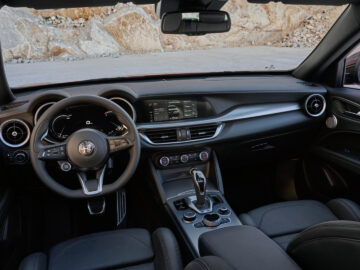
Alfa Romeo Giulia and Stelvio: the driving experience
Still, it always remains a special phenomenon with the Alfa Romeo brand. Step into the Giulia or Stelvio and the fine leather, good workmanship and large flippers behind the steering wheel will make you feel special. Via the start button on the steering wheel, we start the familiar 280-hp 2.0 four-cylinder, which immediately makes itself heard with a raucous growl and a powerful idle rumble.
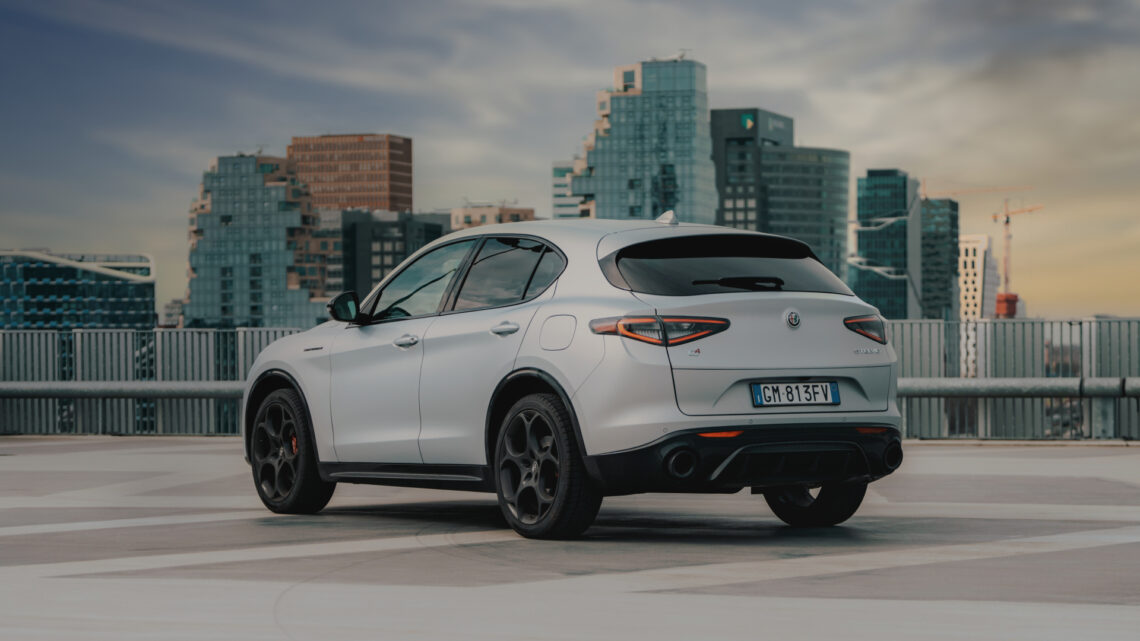
We start the day in the Stelvio. Ideally, we would like to get out of Amsterdam’s city center as soon as possible to get a feel for the SUV’s sporty character. However, the route Alfa Romeo had laid out took us right through PC Hooftstraat. In town, the Stelvio lets itself be easily tamed, but of course that’s not really where you want to be with a car whose main focus is on providing driving pleasure.
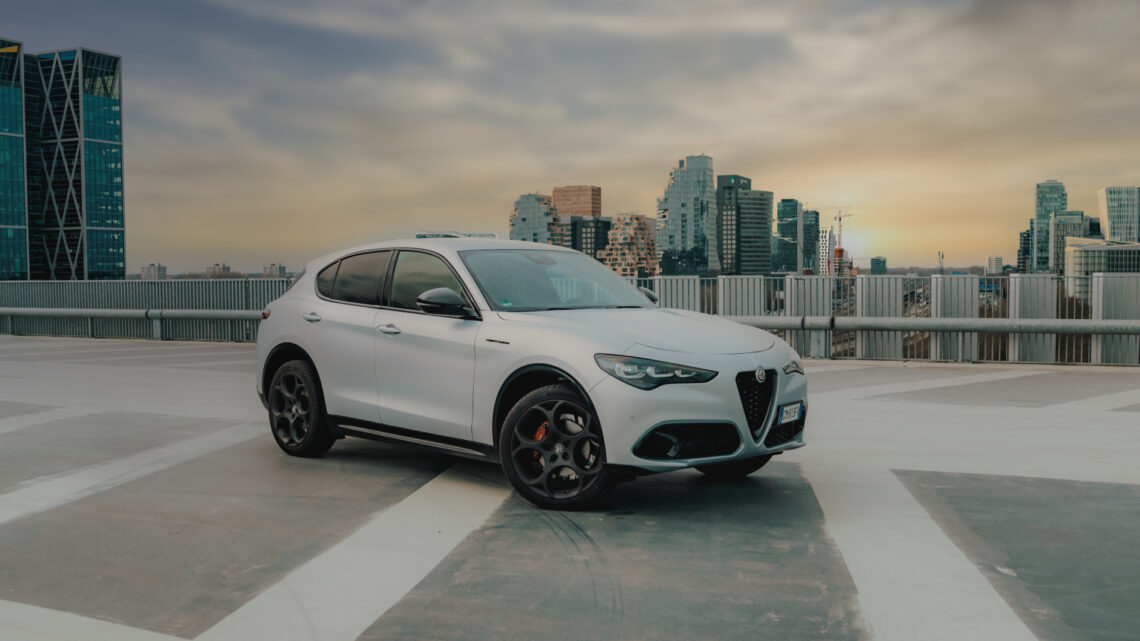
Fortunately, a few good turnarounds on the highway and a small dyke road show us again how great Alfa Romeo’s Giorgio platform is. The Stelvio is probably the best driving SUV you can buy right now. It steers razor sharp and when cornering the car is almost completely level, so balanced does it feel. In addition, the four-cylinder makes a fine combination with ZF’s eight-speed automatic transmission. In automatic mode, the gearbox shifts almost imperceptibly, and when you get going with the flippers, the gearbox responds nicely quickly, while in “Dynamic” driving mode you feel the gearshift transitions more. You can play endlessly with the flippers.
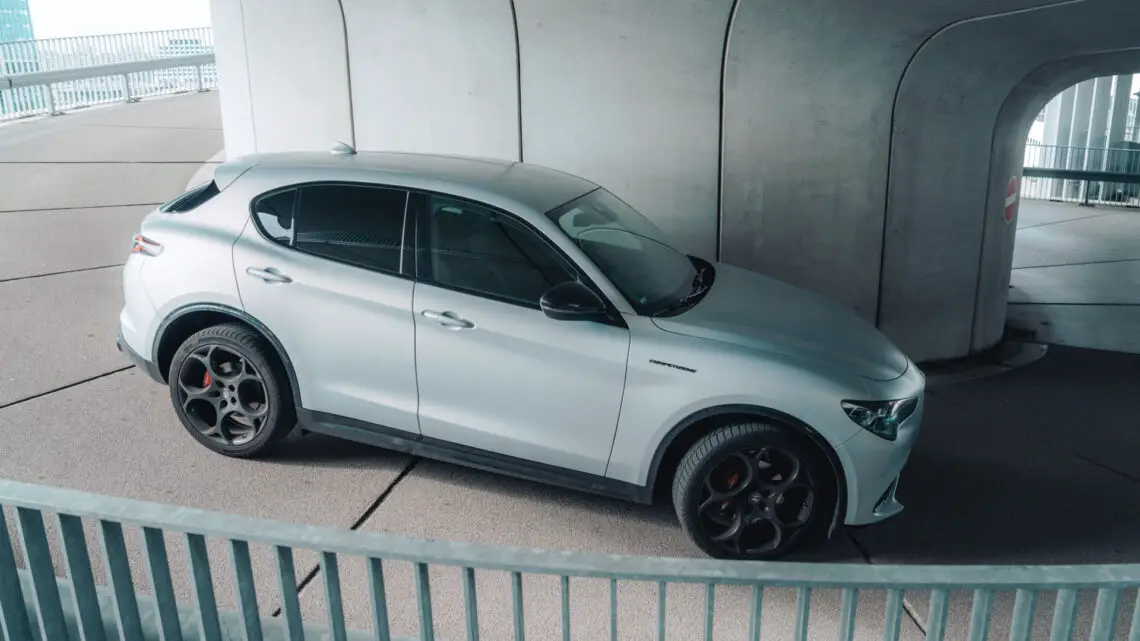
Still contemporary?
Alfa Romeo did not tinker with the technology of both the Stelvio and Giulia during the facelift, by the way. When we get into the latter in the afternoon and drive off, we come to the same conclusion as with the Stelvio: how incredibly well this drives. The Giulia, of course, has an even lower center of gravity than the Stelvio and for that reason feels even sportier. You can really attack corners, and thanks to all-wheel drive and the mechanical limited slip differential on the rear axle, the sedan is not off the hook. Braking for a corner, downshifting three times with the left flipper, steering in and full throttle again. There are almost no modern cars outside the truly sporty top models that offer this level of fun anymore.
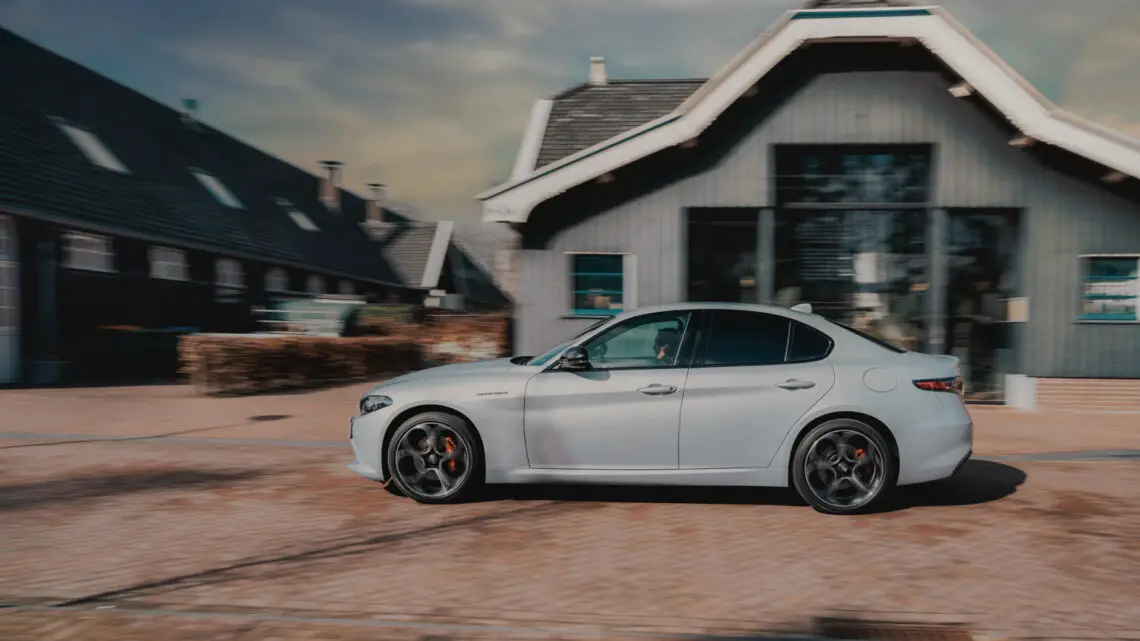
At the same time, we wonder whether the Giulia and Stelvio have moved sufficiently with the times. Neither car has any form of hybrid support, and driving with only a gasoline engine today feels wonderfully traditional. But perhaps Alfa Romeo could not do otherwise. According to the brand, the Giorgio platform offers no room for any form of electrification, so the Italians emphatically skip the step of a (plug-in) hybrid. Instead, both models will have all-electric successors in the future.
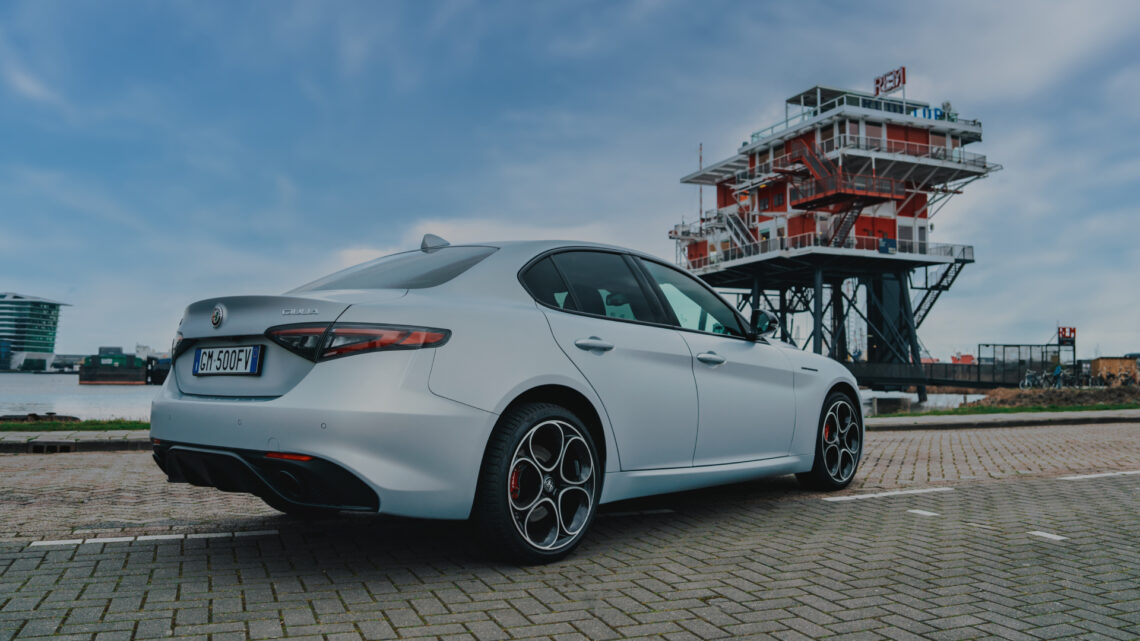
Punished by tax authorities
That lack of hybrid support means the updated Alfa Romeo Giulia and Stelvio are not exactly bargains in the Netherlands. Alfa Romeo thinned the price list of both models considerably, supplying only the aforementioned 280-hp gasoline engine and a 210-hp 2.2 JTDM diesel engine. Furthermore, all-wheel drive and the eight-speed automatic transmission are both a mandatory number. The Giulia’s price list starts at 65,000 euros; the Stelvio comes in at a minimum of 76,150 euros.
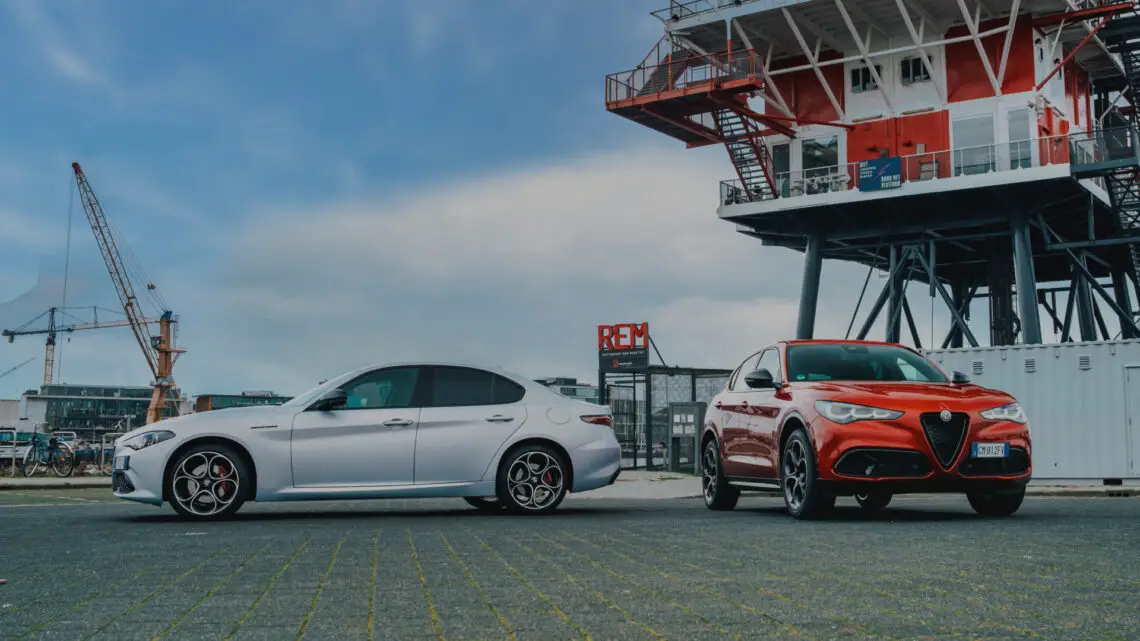
In the case of the Giulia, for the starting price you get the gasoline engine in the Sprint version, in the case of the Stelvio it is the diesel engine. Alfa Romeo also thinned out the available versions. The entry-level “Super” version disappeared from the price list for both the Giulia and the Stelvio, remaining are the “Sprint,” “Ti” and “Veloce. Standard features on the Sprint already include LED headlights and taillights, all infotainment, front and rear parking sensors, keyless entry and adaptive cruise control. The “Competizione” is an extra-thick introductory version that includes a special matte color, 21-inch wheels, a Harman Kardon audio system and Competizione badges. So you pay a pretty hefty additional price for that.
Prices Alfa Romeo Giulia
| Engine | Model | Price in euros |
| 2.0 GME 280 AWD AT8 | Sprint | 65.000 |
| 2.0 GME 280 AWD AT8 | Ti | 67.500 |
| 2.0 GME 280 AWD AT8 | Veloce | 72.000 |
| 2.0 GME 280 AWD AT8 | Competizione | 76.000 |
| 2.2 JTDM 210 AWD AT8 | Ti | 66.500 |
| 2.2 JTDM 210 AWD AT8 | Veloce | 69.000 |
Prices Alfa Romeo Stelvio
| Engine | Model | Price in euros |
| 2.0 GME 280 AWD AT8 | Sprint | 79.300 |
| 2.0 GME 280 AWD AT8 | Ti | 81.800 |
| 2.0 GME 280 AWD AT8 | Veloce | 84.300 |
| 2.0 GME 280 AWD AT8 | Competizione | 90.300 |
| 2.2 JTDM 210 AWD AT8 | Ti | 76.150 |
| 2.2 JTDM 210 AWD AT8 | Veloce | 78.650 |
Conclusion Alfa Romeo Giulia and Stelvio
The updated Alfa Romeo Giulia and Stelvio are fantastic to drive, but they were so before the facelift. Unfortunately, the innovations Alfa Romeo has made are not enough to truly bring the Giulia and Stelvio back up to date, but at the same time, it is refreshing to see a brand that still values the pleasure of driving so highly. Unfortunately, the lack of hybrid support and the elimination of the less powerful motorizations does mean that the starting price of both the Giulia and Stelvio in the Netherlands is a lot higher than that of the competition.
So should you still opt for the facelifted Giulia and Stelvio? If you already have a Giulia or Stelvio, it adds pretty little to go for the facelift. But if you’re in the market for a real driver’s car, you can’t ignore Alfa Romeo’s. They are a distinctive alternative to models from BMW, for example, but offer at least as much – if not more – driving pleasure.

